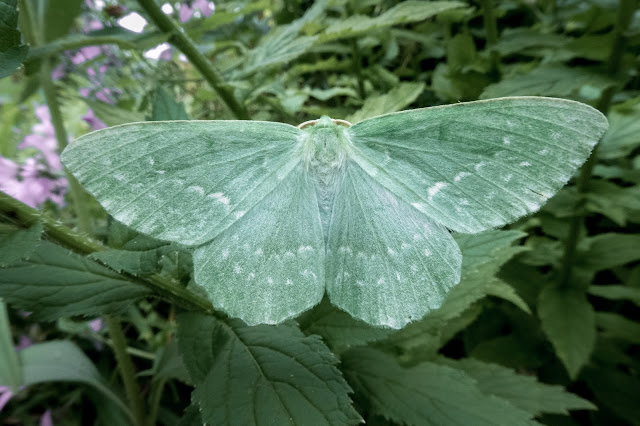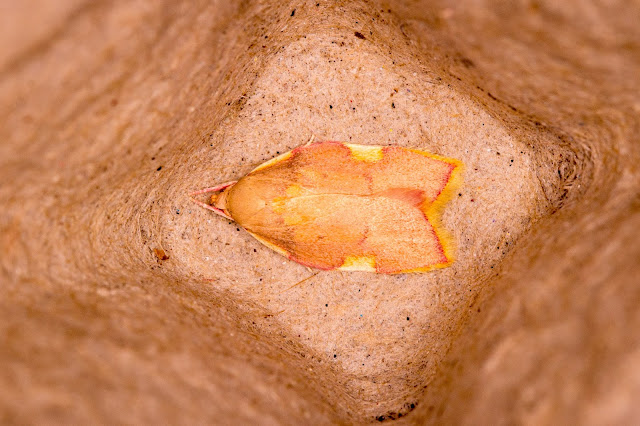More fun with the trail camera. When my friends Naomi and Cathy visited recently we were watching a weasel running in and out of the garden, each time coming back with something in its mouth. At first I thought it might be the weasel moving its kits but we soon realised it must have discovered a mouse or vole nest and was bringing the prey back for its own young. It was so fast and unpredictable that I didn't manage to get a photo so I set up a trail camera.
My Blog List
Sunday 29 August 2021
WeaselCam
More fun with the trail camera. When my friends Naomi and Cathy visited recently we were watching a weasel running in and out of the garden, each time coming back with something in its mouth. At first I thought it might be the weasel moving its kits but we soon realised it must have discovered a mouse or vole nest and was bringing the prey back for its own young. It was so fast and unpredictable that I didn't manage to get a photo so I set up a trail camera.
Thursday 26 August 2021
I have been expecting you Mr Bird
Not James Bond, but also licensed to kill. In previous summers the sparrowhawk has caught me by surprise when he turned up on the perch in August but this time I was ready. I rebuilt the hide inside the window to the kitchen garden a couple of weeks ago and cleaned the glass and early in the morning two days ago there he was.
I knew he was around because several times recently I have looked out of the window to see no small birds, which is very unusual. Earlier in the summer there were also the remains of several kills a week on the lawn.
You can see he is still regrowing a few tail feathers after this year's moult and, like last year, the new feathers are steely blue/grey colour whilst the older frayed ones are brown, so I think this bird is going into his second winter. It looks as though he has some retained some juvenile primaries (flight feathers) as well. Although this is not the same bird as last year, the timing is almost identical, just three days earlier than last year.
He flew off to the other side of the house but half an hour later he was back on the compost bin, requiring a very oblique shot through the window.
He changes from fluffy to sleek in an instant as he tenses for a strike.
After a failed attack he was up on top of the feeder.
Monday 23 August 2021
Fox News
I have been convinced there are more cubs in the family but until now it has been impossible to get more than four in one photo. I reckon to see at least six or seven foxes every evening but the cubs aren't easy to tell apart. The adults, on the other hand, are very easy to identify. Here they all are - left to right they are the dog, the vixen, and the two yearlings (one with half a tail which you can't see here).
Then last week as I was watching three cubs and the half-tail yearling a fourth cub entered front left, and moments later another from back right. Here are the five cubs.
And this is the moment the fifth cub appeared.
So now I know there are at least five but I still think it may be more. Some are smaller than others and some are paler. As they come and go it is usually impossible to keep track of them all.
A couple of the male cubs and now larger than their mother and their older half sisters. Things are getting more competitive as they mature and try to establish the dominance hierarchy, although they quickly settle down and return to feeding. Here is one recent example.
The screaming cubs sound a bit like chimpanzees in a David Attenborough programme. It is interesting how unconcerned the others are while the row is going on.
Friday 20 August 2021
Yet more moths
I don't plan to post a photo of every moth I catch in the moth trap but I would like to show a few more. I set the trap in July and caught at least 30 species that I could identify. Since then I have set the trap on two more nights in July catching a further 20 and eight species respectively and twice so far in August with another four and seven species. That's around 70 species that I can recognise and probably at least another dozen that I haven't worked out. Here are a few of my recent favourites.
Large emerald
It takes only a few minutes to set up the trap but then and hour or two to unload it and photograph the catch and several more hours to try to identify them. I'll try a few more nights this season before deciding how seriously to take it next year.
Monday 16 August 2021
The fox cubs' dinner guest
This is a brief follow-up to my post of three nights ago. I was watching six foxes at the back door when I became aware of the hedgehog coming towards them. I was only set up with a wide-angle lens so I ran for another camera. Please forgive the rather clumsy camera work but it is interesting to see the interaction. The cubs are mostly wary of the hedgehog and make sure to keep their distance. The hedgehog isn't in the least concerned.
Friday 13 August 2021
A hedgehog in the garden
I haven't seen a hedgehog in the garden for five years, until this past few days. The latest one was first picked up on the trail camera, first in daytime and then at night.
I was a bit concerned because hedgehogs don't normally come out in the day and it can be a sign of sickness. But at this time of year newly independent youngsters sometime forage in daylight because they are hungry, and the weather has been very dry which doesn't help. This one is small but seems quite sprightly. The first time I saw the hedgehog myself was when it turned up while I was waiting for the foxes. And while I was watching, the half-tailed yearling vixen turned up. (You can hear in the background that the oystercatchers are still around.)
I would have thought the vixen had seen a hedgehog before but the hedgehog may not have encountered a fox. The younger foxes are interested in the hedgehog but only out of curiosity - they sniff it and move on. The older vixen just ignores it.
Last night the hedgehog was here first and was eating the fox food. It had some peanuts and two small bits of chicken skin before wandering off across the meadow. The first fox cub to arrive just stood and watched and didn't seem to know what to make of it. Later the hedgehog walked by, unconcerned by four foxes watching it as they were eating.
Then the hedgehog appeared outside the kitchen window less than an hour ago. This is the first time I have seen it in daylight and I was able to get quite close. It seems healthy and vigorous and was again foraging under the bird feeders so for the moment I think I shall just keep and eye on it. It won't be easy leaving extra food for it as the foxes would probably just eat that as well as theirs.
Tuesday 10 August 2021
An away day
After all the restrictions of the last 18 months it seems quite an expedition to go even as far as Cragside, a round trip of only 50 miles. I went to Slipper Tarn to look at the dragonflies and I was pleased I went early, partly to miss the crowds and because as soon as I arrived I found a female common hawker already laying her eggs.
Common hawkers usually lay tight in to the edge of the water but this one also ventured out into the middle of the pond, something I haven't seen before.
There were lots of male common hawkers on patrol but none stopped for a photo. Then I found one freshly emerged and still expanding his wings while hanging on to his exuvia.
A few minutes later the wings were outstretched and he took his maiden flight.
Cragside is the best place I know to see black darters and they were out in numbers. Here is a male.
And a female.
And a mating pair.
Common darters were common, but not as common as black darters.
I also saw plenty of damselflies - azures,
emeralds,
and large reds.
I found several darter exuviae, only 13mm long so very probably from black darters, our smallest dragonflies. It is amazing that a 29-34mm long dragonfly comes out of a 13mm exuvia.
I also retrieved the common hawker exuvia for a photo. This is 44mm long yet the dragonfly is around 70-80mm.
























































